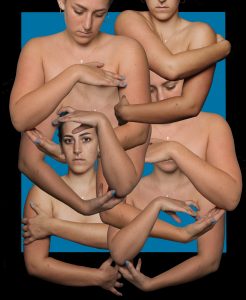Listening to Robin Lynch p2!
It was even more exciting to hear Robin Lynch talk to us this time. She has harvested the fruits of her through investigation and begun considering what she wants to make. I was impressed with how deeply she has researched Uncle Tom’s cabin. She dove into it until she felt she fully understood it, or at least understood more than our cultural perception of it. She recommended that everyone actually read it, which I plan to do.
I think Lynch’s process of research is really interesting because it is so much more extensive than mine. She looked into exhibitions that were themed around Uncle Tom’s Cabin and read curators comments to gain their knowledge. She also read books that seemed less directly related but are still important to her goals, such as books about earlier graphic design and the Getty collection of posters advertising about Shakespeare. Lynch is trying to understand her subject from many different angles, from historical to visual.
Lynch found that the images which have been recreated most from Uncle Tom’s Cabin are of Topsy, Eliza running with her child across the ice, and of Uncle Tom and Eva. These depictions of characters are from neutral moments in the story, not ones that show the brutality of slavery that Lynch believes make the book so powerful, even to this day. The ubiquity of these images has led Lynch to many important questions. Of the whitewashed image of Eliza, she asked “do you have to look like that to get sympathy?” When examining the almost featureless or inhuman images of Topsy, Lynch is asking what it will take to undo the incredibly racist base of our culture. She is also thinking about the suggestive depictions of Uncle Tom and Eva’s relationship, and this is the part that intrigues me the most.
As someone in an interracial relationship, I feel a lot of discomfort coming from the culture around me about what my relationship should and shouldn’t look like, in ways that feel just as indescribable as they are pressing. I asked Lynch how looking at these images made her feel and she said angry, but that the images are nowhere near as upsetting as the graphic nature of the brutality written about in the actual book. Then she asked me how the images made me feel and I said uncomfortable. The supposed child Eva, who has a pretty womanly figure, is shown in intimate poses with Uncle Tom, who in many of the images doesn’t look very old. You can do an easy google yourself, but this is a great example. Here is another. I don’t think the interpretation that these images are sexual in nature is at all off base. I wonder if our culture still views white women in love with black men as little girls playing with emasculated slaves. I just wonder why people created images of this sexual nature. What is it about the story and these characters that so entranced peoples romanticism? Why did people change so many key features of these characters to depict them this way? I am glad Lynch showed me these images because I think they will help me as I continue to consider my relationship’s place in our country today.
Lynch plans to create a visual collection of these images, in some type of book that subverts these images or makes them contemporary. She was also considering the format of an anti racism Alphabet book for children, or animation. First she has to create mind map so that she can see everything visually. I cannot wait to see what she makes, especially after I read Uncle Tom’s Cabin.


Thoughtful–interested also in how what Lynch is doing in her research pertains to your own research and ideas. Also, excited that you’re going to read Uncle Tom’s Cabin. Me too–we can have a book group.